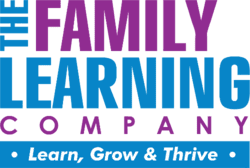Learner Control and Family Learning Software

Research indicates that learner agency significantly impacts learning outcomes; learners controlling their learning tend to be more motivated. Kanevsky & Keighley highlight five aspects, including control and choice, fostering engagement. Learner-controlled software allows varied challenges in reading, enabling progression. However, the absence of a caring teacher is supplemented through team learning. Yet, algorithms in computer-assisted instruction offer no added benefit over traditional learning experiences. Such algorithms lack sophistication to personalize learning effectively. Interactive Family Literacy embodies these findings by empowering learners with control over their learning, allowing autonomy in choosing activities, locations, and levels. This approach ensures sustained engagement and enhanced learning outcomes.
In general, the large amount of research on the subject of learner agency shows that “the degree to which students learn how to control their own learning … is highly related to outcomes.” [Hattie, John. Visible Learning: a Synthesis of Meta-Analyses Relating to Achievement, 2009, P. 48.] Furthermore, for computer-aided instruction, “when the student is in ‘control’ over his or her learning … then the effects were greater than when the teacher was in ‘control’ over these dimensions of learning.” [Ibid. P. 225.] Learners who feel that they are in control of their learning are more highly motivated to do the often difficult work of acquiring a new skill like reading. Studies by Kanevsky & Keighley on learner engagement show that, “Five interdependent features … distinguished boring from learning experiences: control, choice, challenge, complexity and caring teachers. The extent to which these five C's were present determined the extent of learners’ engagement and productivity.” [Lannie Kanevsky & Tacey Keighley. To produce or not to produce? Understanding boredom and the honor in underachievement, Roeper Review, Volume 26, 2003 - Issue 1, P. 20-28]
Learner-controlled software gives learners control through choice. Learners choose their own challenges across a range of complexity; for example, in reading, evolving from simple alphabet activities to the application of complex analysis to text. The key item that software cannot provide is a caring teacher. That’s where peer learning comes in [See Peer Learning is Better than 1-1 Computing by Jonathan Bower]: learners can share a screen with peers, who usually care about their co-learners, and with caring parents who certainly do. In this way, learner-controlled software provides truly engaging and effective learning experiences.
And what about algorithms? Computer-assisted instruction is one of the many interventions studied by researcher John Hattie who found that:
- normal mental development and exposure to a teacher for a year generates an average learning gain of 0.37, [That is, an effect size of 0.37 from the school experience over one year. Effect sizes ranged from -0.3 to 1.44.], while
- the use of computer-assisted instruction also shows a gain of exactly 0.37 per year. Learners who use algorithmically-controlled software see no benefit above lerners who don’t!
We shouldn’t be surprised. The algorithms used are rarely sophisticated enough to account for the different learning pathways of real students. As Richard Culatta says, “a model where a student is simply clicking through digital content at their own pace does not meet the criteria for personalized learning.” [Tweet: Richard Culatta,CEO, International Society for Technology in Education] Even “Individualized Instruction” programs based on learner-response algorithms do not provide a truly personalized learning experience, and as shown by Hattie’s analysis if the research, do not contribute in a meaningful way to learning.
Interactive Family Literacy implements all of this best practice research by putting learners in charge of their own learning in order to maximize learning outcomes. Interactive Family Literacy is learner-controlled. This means that learners choose not only when and where they use them, but also, what learning activities they perform, or build ̶ without limitations. They are free to choose any level, any activity, and to repeat activities as they wish/need. They use information about their performance on each activity, and about what they need to accomplish, to decide whether to repeat it, move on to a more difficult one, or to do something else entirely. The result is both long-term engagement and accelerated learning.
Click here to see how research plays a central part of Interactive Family Literacy
Here is another research study on the impact of learner control on learning outcomes.
